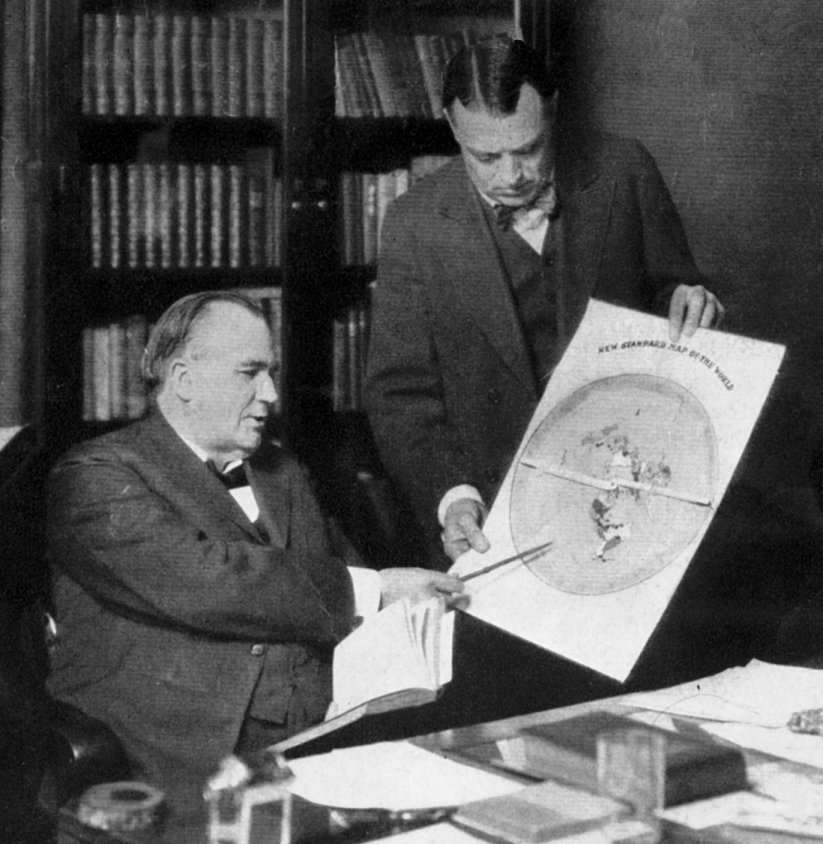


Johnson paid for these publications through annual member dues costing United States dollar 6 to US$10 over the course of his leadership. The most famous publication was Flat Earth News, a quarterly, four-page tabloid. Johnson issued many publications and handled all membership applications. Over the next three decades, under his leadership, the Flat Earth Society grew to a reported 3,500 members. Johnson inherited part of Shenton's library from Shenton's wife, and established and became president of the International Flat Earth Research Society of America and Covenant People's Church in California. One thing we know for sure about this world.the known inhabited world is Flat, Level, a Plain World. Vast cataclysmic events and shaking no doubt broke the land apart, divided the Land to be our present continents or islands as they exist today. Historical accounts and spoken history tell us the Land part may have been square, all in one mass at one time, then as now, the magnetic north being the Center. In 1969, Shenton persuaded Ellis Hillman, a Polytechnic of East London lecturer, to become president of the Flat Earth Society but there is little evidence of any activity on his part until after Shenton's death, when he added most of Shenton's library to the archives of the Science Fiction Foundation he helped to establish. Later asked about similar photographs taken by astronauts, he attributed curvature to the use of wide-angle lens, adding, "It's a deception of the public and it isn't right". When satellite images showed Earth as a sphere, Shenton remarked: "It's easy to see how a photograph like that could fool the untrained eye". Given Shenton's interest in alternative science and technology, the emphasis on religious arguments was less than in the predecessor society. In 1956, Samuel Shenton created the International Flat Earth Research Society as a successor to the Universal Zetetic Society, running it as "organising secretary" from his home in Dover, England. International Flat Earth Research Society A flat Earth journal, Earth: a Monthly Magazine of Sense and Science, was published between 1901–1904, edited by Lady Blount. The society published a magazine, The Earth Not a Globe Review, and remained active well into the early 20th century. Īfter Rowbotham's death, Lady Elizabeth Blount established a Universal Zetetic Society, whose objective was "the propagation of knowledge related to Natural Cosmogony in confirmation of the Holy Scriptures, based on practical scientific investigation". Rowbotham created a Zetetic Society in England and New York, shipping over a thousand copies of Zetetic Astronomy. Rowbotham and followers like William Carpenter gained attention by successful use of pseudoscience in public debates with leading scientists such as Alfred Russel Wallace. He also published a leaflet titled The inconsistency of Modern Astronomy and its Opposition to the Scriptures, which argued that the "Bible, alongside our senses, supported the idea that the earth was flat and immovable and this essential truth should not be set aside for a system based solely on human conjecture". Rowbotham further held that the Sun and Moon were 3,000 miles (4,800 km) above Earth and that the "cosmos" was 3,100 miles (5,000 km) above the Earth. He later expanded this into the book Earth Not a Globe, proposing the Earth is a flat disc centred at the North Pole and bounded along its southern edge by a wall of ice, Antarctica. Based on conclusions derived from the Bedford Level experiment, Rowbotham published a pamphlet Zetetic Astronomy. Modern flat Earth belief originated with the English writer Samuel Rowbotham (1816–1884). 5.1 Examples of attempts to prove flat Earth.2 International Flat Earth Research Society.


 0 kommentar(er)
0 kommentar(er)
